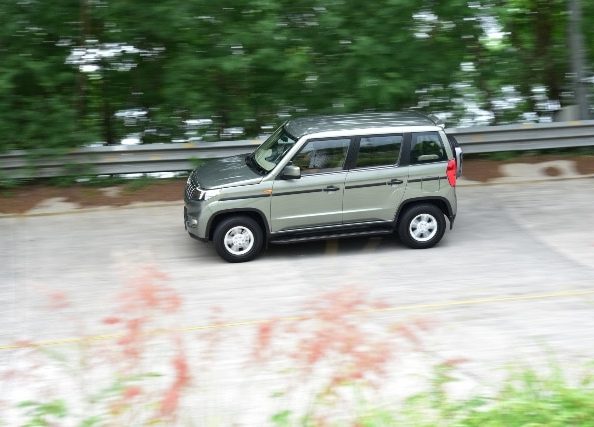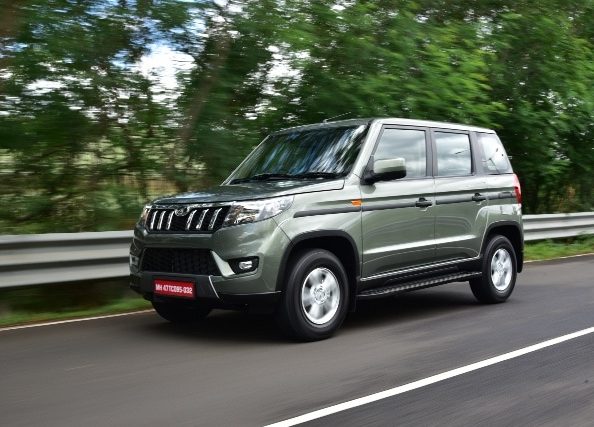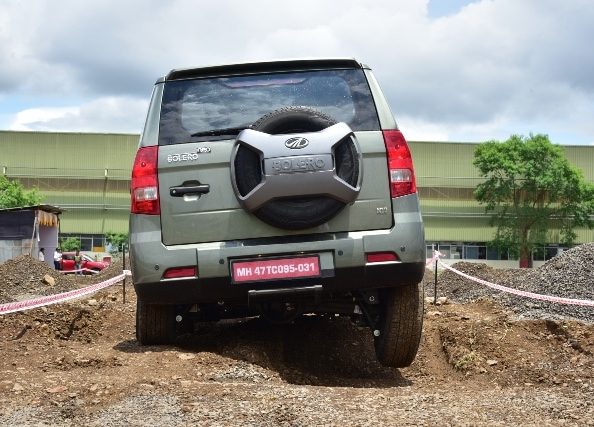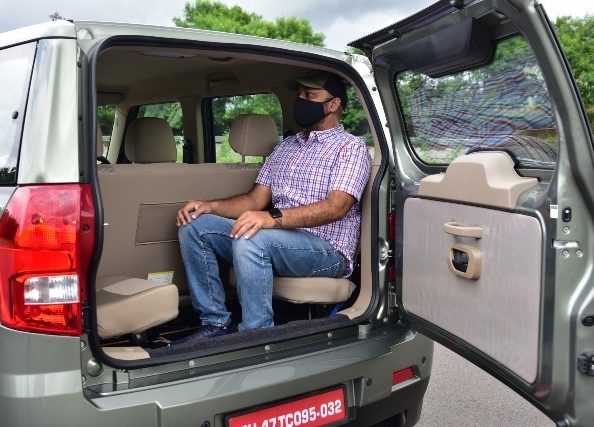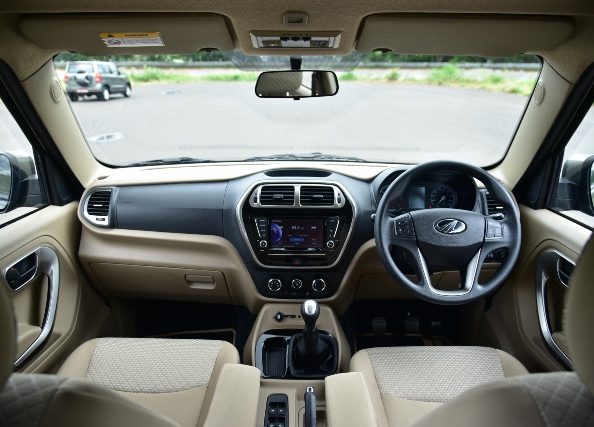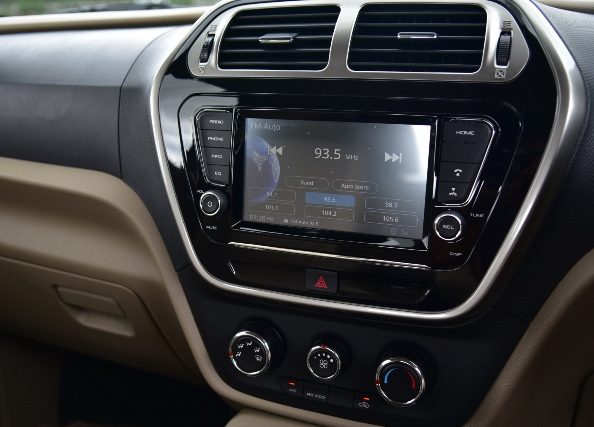The Mahindra Bolero Neo aims to attract existing Bolero owners by offering them a modern and more comfortable SUV which is equally easy to maintain.
Story: Sarmad Kadiri
Photography: Apurva Ambep
When we drove the first-gen Mahindra TUV300, it did leave us impressed by its ability to tackle bad roads and overall ruggedness. But it wasn’t perfect. So, it wasn’t a big surprise when Mahindra didn’t upgrade the SUV with a BS6 engine and, in fact, took it off the market, albeit temporarily. The engineers were given the task to polish the rough edges, rebrand it, and introduce the model as a more modern and upmarket alternative to the Bolero. In the last couple of years, Mahindra did plenty of work to improve the model in every aspect, apart from slapping on the Bolero Neo badge and a BS6-compliant diesel engine. Let’s take a closer look.
Design
Although it still looks boxy, the entire body-shell has been dropped 20 millimetres closer to the ladder-frame chassis. The idea was to reduce the ride height without altering the ground clearance much. This improves ingress and egress, while the reduced gap between the trapezoidal wheel-arch gives the car a more planted stance. Even the bonnet has been lowered by 40 mm, which further improves visibility.
The designers added a whole bunch of ‘Bolero’ elements such as similar front grille with chrome inserts; the rectangular headlamps that, along with the bumper, create an X-motif; while the C-shaped brackets around the fog-lamps are an obvious inspiration. Trying to reduce the visual bulk, the designers lowered the belt-line and added a sleek rubber cladding on the sides in a distinct Bolero style. You also get side and rear foot-steps. The rear design gets a spoiler and the ‘X’ pattern can also be seen on the bootlid-mounted spare wheel cover. Talking of which, the 15-inch wheels might seem a size or two small, but all that rubber would do a good job off road.
Cabin
Compared to Bolero’s strictly functional cabin, the Neo looks more urbane. It carries forward the Pininfarina-designed TUV300 interior but this still can’t match the new lot of sub-four-metre SUVs in terms of flair or material. The two-tone dashboard of the Neo looks clean but basic, there’s a seven-inch touchscreen right at the centre with old-school buttons and knobs on either side. (Also Read: MG Hector Plus Review)
Seven Seats
The seat layout is the same as before, though the fabric is all new. You sit high and get height adjustment for the driver’s seat, which offers a proper SUV-like commanding driving position. The new additions are individual arm-rests for the front seats and soft fabric on the door-panels. The rear bench can comfortably accommodate three adults and has plenty of head-room, though the knee-room isn’t too generous.
That is probably to carve out enough room for the side-facing third-row seats. Apart from the five people ahead, the last rows can seat two individuals as well, but there’s limited shoulder-room and, when sitting face-to-face, their knees will be in constant contact. You don’t get any seat-belts or a-c vents here, though there’s a butterfly window to your rescue. Strap up the seats and you get 384 litres of luggage space.
Features
You get four variants to choose from: N4, N8, N10, and the top-end N10 (O) we got to drive. This had keyless entry but no push-button start/stop, electric mirror adjustment, cruise control, parking sensors, micro-hybrid system, rear glass defogger and wiper, and steering-mounted controls. You get a 2 DIN music system but no Android Auto or Apple CarPlay, but, surprisingly, there’s no rear camera which makes manoeuvring this SUV pretty challenging, especially when you consider that the previous TUV300 did get one.
The safety kit covers the usual base such as ABS with EBD, dual airbags, corner braking control, and reinforcement on door-panels. Our test car also boasted of a mechanical locking differential which means it can go over broken roads with relative ease. (Also Read: Kia Sonet Long Term Review)
Engine
The Bolero Neo only comes with a 1.5-litre three-cylinder diesel engine which also powers the Bolero, and is offered with a five-speed manual gearbox only. For now there is no automatic option available but you’ll be happy to note that the clutch is light and the shifts aren’t notchy, though the throws feel a bit long.
The MHawk 100 on the regular Bolero makes 75 hp, but in the Bolero Neo, it’s tuned to churn out a decent 100 hp. Another big change is the eVGT which helps make 260 Nm of torque, which is 20 Nm more than what this oil-burner produced in the TUV300. Though you get the usual gear-level shake every time it is cracked up while driving this three-cylinder, it feels relatively refined and low on NVH. The good low-end power delivery along with the short gear ratios make it quick off the feet. It comfortably cruises at low revs even in higher gears without any complaints. And the Bolero Neo feels the happiest between 3,000 and 4,000 rpm without being forced towards the red-line. There’s no point revving it harder as it doesn’t have much to offer at higher revs.
Performance
The Neo didn’t light up the testing track during the 0-100 km/h sprint but felt pretty composed at the three-digit speed, beyond which it tends to run out of steam. Clearly, the Bolero Neo isn’t meant for a full-house enthusiastic highway run but it won’t disappoint if you want to chug along well within the speed limit. The steering feels heavy, especially since we’ve been spoilt by the wispy and more sophisticated systems of most other compact SUVs. At high speeds, there’s evident body-roll but it feels more composed than the TUV300. That is mainly due to the lower centre of gravity and tweaked suspension.
Off-Road Driving
To test the suspension further, we headed to a small, makeshift off-road course created by in-house experts — Mahindra Adventure. This is where you begin to truly appreciate the pedigree of this Mahindra. The Bolero Neo is based on the company’s third-generation body-on-frame platform which also underpins the new Thar. This, along with the robust suspension, make broken paths seem like a playground. There is ample ground clearance with a small front overhang and negligible rear overhang, so you’re never scared of scraping the underbelly even on challenging road surfaces.
Multi-Terrain Technology
What makes matters even better is the new mechanical locking differential (MLD) or Multi-Terrain Technology (MTT), which has also been borrowed from the Mahindra Thar and available as standard on the soon-to-be-launched N10 (O) trim. The MTT can practically get this rear-wheel-driven out of the trickiest of situations. For instance, you’re driving over slushy roads and the rear left wheel starts to lose traction and begin to spin faster than the other. The system immediately locks the wheels, ushering in more torque to the rear right wheel which already has better road grip, helping the Neo claw back into action. This really boosts the driver’s confidence while negotiating difficult terrain, which can be found in abundance practically everywhere in our country. Note of caution: first-time users might find the metallic clunk sound when the MTT engages rather alarming.
Verdict
Mahindra have priced the Bolero Neo on a par with the standard Bolero, between Rs 8.5 lakh and Rs 10 lakh (ex-showroom), aimed at the heartland of India and not at the spoilt-for-choice urban buyers looking for feature-rich compact SUVs. It’s good value, too, with usable seven seats, Mahindra’s proven toughness, MTT backed off-roading prowess, a decent looking cabin, and a fairly refined diesel engine. And if you’re sorely missing the rear camera, it is available at company dealerships as an optional fitment. Now we’re eager to see how the Indian heartland reacts to this unique proposition.


